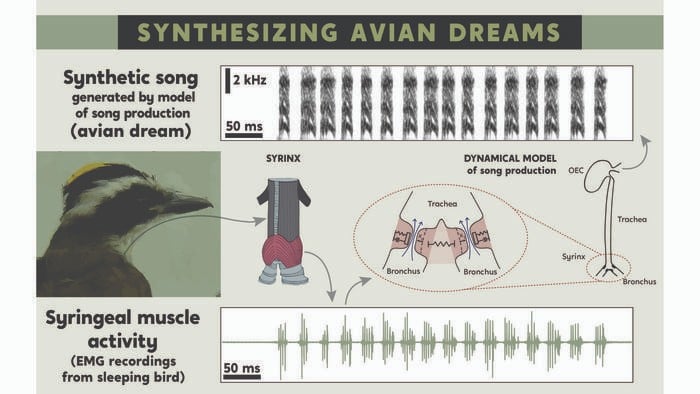For over 20 years, researchers have known that areas of birds’ brains dedicated to singing show neural patterns during sleep that are similar to the ones used while the birds are awake and singing. However, the exact code behind how this information is processed has remained a mystery – until now.A team of researchers from the University of Buenos Aires has developed a method to translate the vocal muscle activity of birds during sleep into synthetic songs. By capturing the sleep birds’ muscular activity data through electromyography (EMG) recordings and using a dynamical systems model, the researchers can synthesize the corresponding song.
Empathizing with Dreaming Birds
Hearing the sounds emerge from the data of a bird dreaming about a territorial confrontation was incredibly moving for lead author Gabriel Mindlin. “I felt great empathy imagining that solitary bird recreating a territorial dispute in its dream,” he said. “We have more in common with other species than we usually recognize.”
The team’s study presents biophysics as a new exploratory tool capable of opening the door for the quantitative study of dreams. “We’re interested in using these syntheses, which can be implemented in real-time, to interact with a bird while it dreams,” said Mindlin. “And for species that learn, to address questions about the role of sleep during learning.”
The Unique Challenges of Translating Birdsong
Translating syringeal activity into song is a bit of a challenge, as many bird species have complex musculature. For this initial work, the researchers chose the Great Kiskadee, a member of the flycatcher family, for which they had recently discovered the physical mechanisms of singing and presented some simplifications.
This breakthrough in decoding the dreams of songbirds represents a significant step forward in our understanding of animal consciousness. By revealing the musical language of sleeping birds, the researchers have opened up new avenues for exploring the cognitive and emotional lives of our feathered counterparts, and potentially uncovering surprising similarities between the inner experiences of humans and other species.


